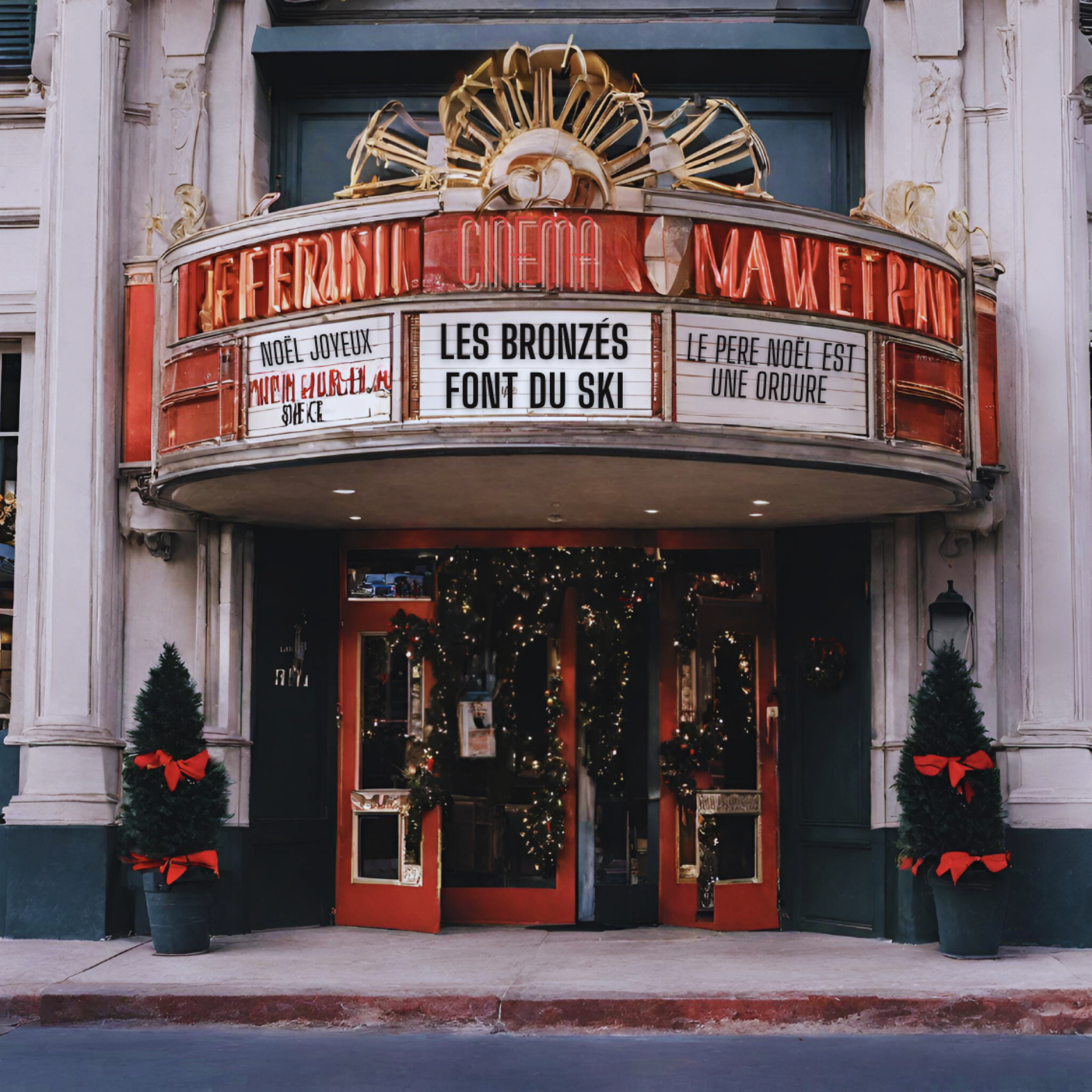We’ve noticed that our American students have a lot of questions about the best ways to appreciate French cheese. Can you eat cheese with crackers, or just with baguettes? Which wines go well with which cheeses? How do you choose a variety of cheeses that blend well together on a cheese board? If you’ve ever asked yourself any of these questions (or really any other question about French cheese), then you’ve come to the right place! Read on to learn all about the art of la planche du fromage and how to become a more adventurous cheese lover. Just like our friends at Murray’s say, you shouldn’t be afraid to “go from mild to wild”!
Join us at Coucou for one of our apéro events and have a taste of what a proper French cheese board looks and tastes like! All of our delicious cheese is provided by Cheese2U. Visit Cheese2U.com to find delicious cheeses and butters from all over Europe!
How to select cheeses
When buying cheeses for your board, keep in mind that you should always serve a minimum of three varieties: a soft cheese, a hard cheese, and one blue or goat cheese. These three varieties are some of the many types of pâtes de fromage. Un fromage à pâte molle is a soft cheese; un fromage à pâte pressée is a hard cheese; and un fromage à pâte persillée is a blue cheese. There are many other “families” of cheese and you can learn more about them and practice your French by watching this funny video here.
If you want to be super fancy, you can buy your cheese in sets of three. For instance, you could buy three cheeses from the same region, like the Savoie (a beaufort, a reblochon and a bleu du Vercors-Sassenage). Or, you could buy cheeses according to the different milk families: brebis or sheep’s milk (an Ossau-Iraty); lait de chèvre or goat’s milk (a Valençay); and lait de vache or cow’s milk (Brillat-Savarin).
Here’s a list of common cheeses divided into the three categories mentioned above:
- Soft cheeses: camembert, brie, reblochon, brillat savarin… If you want to be festive and surprise your guests with something a little unusual, go for le brillat savarin. Named after a celebrated French gastronome, this cheese’s soft, creamy texture and fresh hazelnut flavours have led it to be called “foie gras of cheeses.” It pairs well with champagne, a Sauternes, or a Bourgogne Blanc.
- Hard cheeses: comté, beaufort, abondance, tomme de Savoie, mimolette… You can never go wrong with a comté, but you might also want to try a mimolette. Pronounced “meem-oh-let,” this was Charles de Gaulle’s favorite cheese! Its electric-orange paste has a sweet, caramelized depth and a smooth, fudgy finish. Eating this cheese with beer is a thing, believe it or not.
- Blue and goat’s cheese: Roquefort and Bleu d’Auvergne (blue cheeses); Selles sur Cher, Valençay, Sainte-Maure (goat cheeses). Since these cheeses tend to be less popular with many Americans, we leave it up to you to try a few and decide which you like most! Any of them will pair nicely with a white wine like this one.
How to store, serve and eat cheese
Take your cheese out of the fridge 1.5 hours before you plan to serve it. This will help its flavors come out. Make sure to keep the wrapping paper the cheese came in! Never store it in a Ziploc bag as this will alter the cheese’s flavor.
As you taste the cheeses you’ve bought, try to go from the mildest cheese to the strongest so that you don’t miss any flavors. All soft rinds (croûte is the French word for rind and crust, by the way!) are edible. If you notice that a cheese’s rind is covered by a thin layer of wax, don’t eat it. Some harder rinds are in fact edible. Wash them and keep them in a Tupperware in the freezer since they can add amazing flavors to your vegetable soups!
One dead giveaway that you don’t know much about cheese is if you cut it in a weird way. Do not cut the tip off a brie! Here’s a helpful instructional video (in French) that shows you how to cut most cheeses, including the heart-shaped Neufchâtel!
Tips on French “accompagnements”
Type “planche de fromage” (cheese board) into Google, and you’ll see all sorts of images like the one above. Aesthetically speaking, cheese boards look beautiful when they’re arrayed fruits and nuts. However, if you’ve ever ordered une planche in France, you’ll know that almost all planches are composed strictly of cheese.
Here’s what traditionally accompanies cheese boards in France:
- Different types of breads: baguette, sourdough, wholeseed… A nut bread with goat cheese can be delicious, but, traditionally, all cheeses are eaten with baguettes alone.
- Charcuterie: At a bistro in France, you can order “une planche mixte,” which includes cheeses and different cured meats. You’ll also often find cornichons and butter on these planches. While this is something you might see at a restaurant, at home, the cheese is always kept alone on its own board or plate.
- Salad: You will often find a tiny bit of salad on French bistro’s planches. This trend started in the ‘70s, and has become increasingly popular. Serving your cheeses with a salad is healthier, the French claim, because it stops you from eating so much bread. In any case, because cheese is traditionally served after dinner in France, you often finish your meal with a salad and a little bit of cheese on the side.
Here are less traditional, but acceptable (in the US!) options:
- Dried fruits: raisins, apricots, cranberries, figs, dates… You might see these on a planche at a very swanky Parisian wine bar, but this is still rare and much more likely to be seen in England.
- Fresh fruit: apple and pear slices, fresh figs, grapes… Avoid tropical and citrus fruits like oranges, kiwis, pineapple or mango. Just as the Italians don’t ever put pineapple on their pizzas, the French avoid pineapple and cheese combinations like the plague.
- Nuts: Walnuts, almonds, and hazelnuts are all good choices, but don’t add too many as their oils will ultimately take away from the different cheeses’ flavors.
- Olives: Popular at French apéros, olives can be served in a bowl next to your board.
What to Avoid
As you might have guessed, the cheese board above was not created by a French person. How do we know? The French don’t over focus on decorations and color variety. Strawberries, blackberries, herbs and other garnishes wouldn’t be found on a traditional French cheese board. As you’ll find out below, the French also never pre-slice their cheese—especially not into cubes! Read on to learn what to avoid as you prepare your cheese board:
- Crackers: The French believe that crackers tend to take away from a cheese’s flavor. If you’re American you might think that sounds crazy, and we agree that certain, very plain crackers are acceptable. But please, please do not eat your cheeses with Ritz, Wheat Thins, or Cheez-its!
- Drizzled jam: Some people like to eat fruit chutneys with their cheese, but you should never pour liquid jam or jelly directly on your cheeses.
- Weird garnishes: While wildflowers and herbs might add a dash of color to your cheese board, keep it simple (“sois simple !”). The best cheese boards aren’t overburdened with all sorts of decorations.
- Pre-slicing your cheeses: Cheese should always be served whole; let your guests cut slices for themselves. Pre-slicing cheese makes it look less appetizing (and slightly infantile). Plus, your cheese might dry out if you slice it too soon.
- Spreading your cheese: In France, since cheeses are never served pre-sliced, it’s up to you to cut a small piece of cheese and put it on a small piece of bread. Never spread your cheese with your knife as though you’re buttering toast!
Vocabulary (Petit lexique du fromager)
Below is a list of essential cheese-related vocab. If you’re super passionate about French cheeses, you might want to consult this lexicon for experts.
- Fromage de vache = cow cheese
- Fromage de chèvre = goat cheese
- Fromage de brebis = sheep milk cheese
- Fromage à pâte molle = soft cheese
- Fromage à pâte dure = hard cheese
- La croûte de fromage = cheese rind
- Un plateau de fromage = cheese board
- Un couteau à fromage = cheese knife
- Une assiette de fromage = cheese plate
- Le pain = bread
- Le beurre = butter
- Un accompagnement = an accompaniment
- Une fromagerie = a cheese shop
- Un fromager = a cheesemonger





